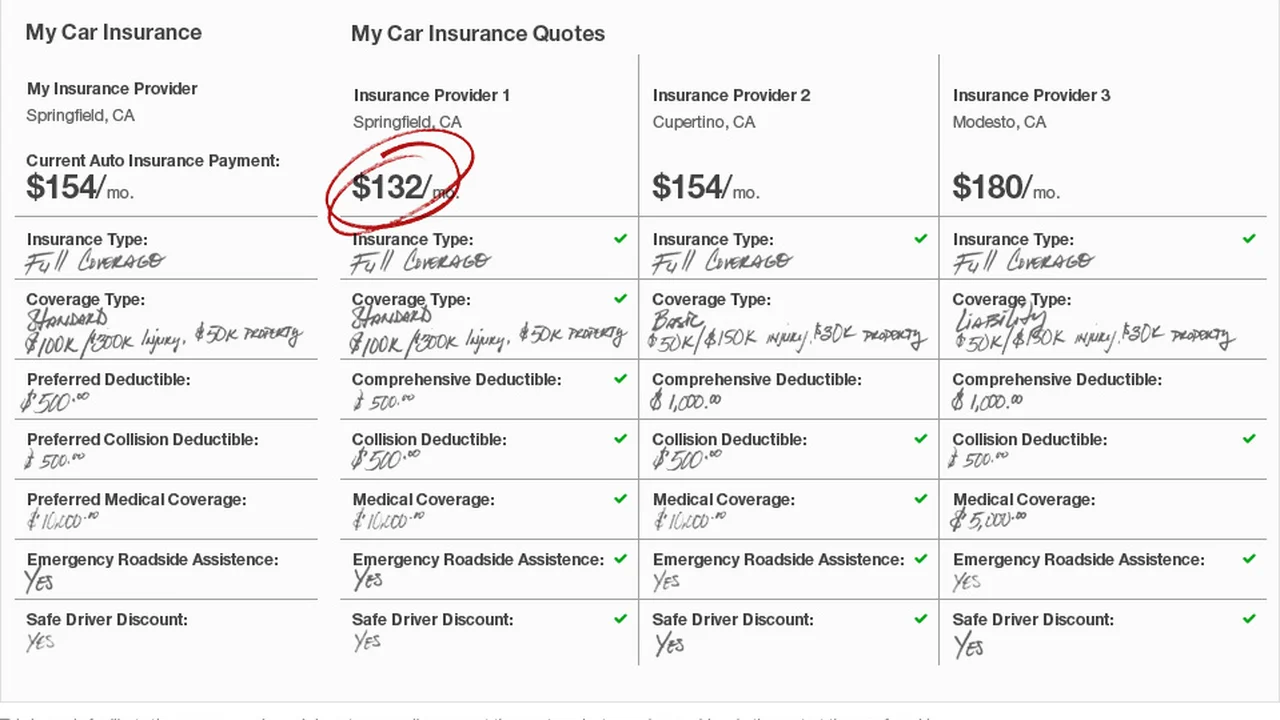Advanced Safety Features: How They Impact Insurance Costs

Understanding the Basics Car Insurance and Safety Tech
So, you're thinking about car insurance, huh? It's one of those things we all need, but figuring out how much you're gonna pay can feel like cracking a secret code. One big piece of that code? The safety features your car boasts. Think of it this way: the safer your car is, the less likely you are to get into an accident, and the less likely the insurance company is to have to shell out cash. That's why those fancy advanced safety features can actually lower your premiums. Let’s dive into how this all works.
Decoding Advanced Safety Features A Comprehensive Guide
Okay, what exactly are we talking about when we say "advanced safety features"? It's more than just airbags (though those are important too!). We're talking about tech that actively helps you avoid accidents. Here's a rundown:
- Automatic Emergency Braking (AEB): This is a lifesaver, literally. Sensors detect when a collision is imminent, and the car will automatically apply the brakes, even if you don't react in time.
- Lane Departure Warning (LDW) and Lane Keeping Assist (LKA): Drift a little too close to the lane markers? LDW will give you a warning (usually a beep or a vibration), while LKA will gently steer you back into your lane.
- Blind Spot Monitoring (BSM): Those little lights on your side mirrors? They're watching your back (or rather, your sides). BSM alerts you when there's a vehicle in your blind spot.
- Adaptive Cruise Control (ACC): This takes cruise control to the next level. ACC maintains a set speed and distance from the car in front of you, automatically adjusting your speed to keep a safe gap.
- Rearview Cameras and Parking Sensors: Backing up can be tricky, but these features make it a whole lot easier. Rearview cameras give you a clear view of what's behind you, while parking sensors beep to warn you of obstacles.
- Tire Pressure Monitoring System (TPMS): Underinflated tires can lead to accidents. TPMS monitors your tire pressure and alerts you if it drops too low.
- Electronic Stability Control (ESC): Helps to prevent skidding and loss of control, especially on slippery surfaces.
- Forward Collision Warning (FCW): Alerts you to a potential collision with the vehicle in front of you.
How Safety Features Translate to Insurance Discounts Understanding the Connection
So, how do these features actually affect your insurance rates? Insurance companies use a ton of data to assess risk. They look at things like your driving history, your age, your location, and, yes, the safety features of your car. Cars with advanced safety features tend to be involved in fewer accidents, and when accidents do happen, they're often less severe. This translates to lower claims for the insurance company, which means they can offer you a lower premium. It's a win-win!
The exact discount you'll receive depends on a few factors, including the specific features your car has, the insurance company you choose, and your overall risk profile. Some insurers offer specific discounts for vehicles with AEB, LDW, or BSM. Others simply factor these features into their overall risk assessment.
Real World Examples Safety Features in Action and Their Impact
Let’s say you’re driving home after a long day, and you’re a little tired. You start to drift out of your lane. Without Lane Keeping Assist, you might not even notice until it’s too late. But with LKA, your car gently nudges you back into your lane, preventing a potential accident. Or imagine you’re backing out of a parking space, and a small child runs behind your car. Without a rearview camera, you might not see them. But with the camera, you can clearly see what’s behind you and avoid a tragedy.
These aren't just hypothetical scenarios. Studies have shown that cars with AEB have significantly fewer rear-end collisions. Lane departure warning systems have been shown to reduce the risk of sideswipe accidents. These features are making a real difference on the road.
Recommended Products and Use Cases Exploring Top Safety Tech
Okay, let's talk about some specific products. Keep in mind that safety tech is constantly evolving, so what's cutting-edge today might be standard tomorrow. But here are a few examples of vehicles that offer impressive safety features:
- Tesla Model 3: Tesla is known for its advanced technology, and the Model 3 is no exception. It comes standard with Automatic Emergency Braking, Lane Departure Warning, and Adaptive Cruise Control. Enhanced Autopilot and Full Self-Driving Capability (optional) add even more layers of safety. Use Case: Daily commutes, long road trips. The ACC and Autopilot features make highway driving much less stressful. Comparison: Compared to other electric vehicles, the Model 3's Autopilot system is generally considered to be more advanced, although it is also more expensive. Price: Starting around $40,000.
- Subaru Outback: Subaru's EyeSight Driver Assist Technology is standard on most Outback models. This includes Automatic Emergency Braking, Lane Departure Warning, Adaptive Cruise Control, and Pre-Collision Throttle Management (which reduces engine power if it detects an imminent collision). Use Case: Family trips, outdoor adventures. The Outback's all-wheel drive and advanced safety features make it a great choice for driving in all kinds of weather conditions. Comparison: The Outback offers a good balance of safety, practicality, and affordability compared to other SUVs. Price: Starting around $28,000.
- Honda Civic: The Civic is a popular choice for its reliability and affordability, and it also comes with a suite of safety features called Honda Sensing. This includes Collision Mitigation Braking System (CMBS), Road Departure Mitigation System (RDM), Adaptive Cruise Control (ACC), and Lane Keeping Assist System (LKAS). Use Case: Commuting, running errands. The Civic is a great choice for city driving, thanks to its fuel efficiency and compact size. Comparison: The Civic offers a good value for the money, with a decent set of safety features at an affordable price point. Price: Starting around $24,000.
- Volvo XC60: Volvo has always been synonymous with safety, and the XC60 lives up to that reputation. It comes standard with City Safety, which includes Automatic Emergency Braking, Pedestrian and Cyclist Detection, and Large Animal Detection. It also offers optional features like Blind Spot Information System (BLIS) and Cross Traffic Alert. Use Case: Family car, long trips. The XC60 offers a luxurious and comfortable ride, with a strong focus on safety. Comparison: The XC60 is a more premium option compared to the Outback and Civic, with a higher price tag but also more advanced safety features and a more luxurious interior. Price: Starting around $43,000.
- Toyota Camry: The Toyota Camry comes standard with Toyota Safety Sense 2.5+, which includes Pre-Collision System with Pedestrian Detection, Lane Departure Alert with Steering Assist, Automatic High Beams, Full-Speed Range Dynamic Radar Cruise Control, and Road Sign Assist. Use Case: Daily driver, family car. The Camry is known for its reliability and longevity, making it a solid choice for everyday use. Comparison: The Camry offers a comprehensive suite of safety features as standard, competing well with other mid-size sedans. Price: Starting around $26,000.
Comparing Products Head to Head Feature by Feature
Let's break down the differences a bit more. While all of these vehicles offer excellent safety features, they differ in terms of the specific technologies they offer and how well those technologies perform.
- Automatic Emergency Braking (AEB): All of the vehicles listed above have AEB, but the specific systems vary in terms of their effectiveness at different speeds and in different conditions. Tesla's AEB system is generally considered to be one of the most advanced, thanks to its use of cameras and radar.
- Lane Keeping Assist (LKA): The effectiveness of LKA systems can also vary. Some systems are more aggressive than others in terms of steering the car back into the lane. Some systems also offer more advanced features, such as lane centering, which helps to keep the car in the middle of the lane.
- Adaptive Cruise Control (ACC): ACC systems also vary in terms of their smoothness and their ability to maintain a safe following distance. Some systems are better at handling stop-and-go traffic than others.
- Blind Spot Monitoring (BSM): BSM systems are generally similar across different vehicles, but some systems offer additional features, such as rear cross-traffic alert, which warns you of vehicles approaching from the side when you're backing up.
The Cost Factor Balancing Safety and Budget
Of course, price is a major consideration when choosing a car. While advanced safety features can save you money on insurance, they can also add to the upfront cost of the vehicle. It's important to weigh the costs and benefits carefully to determine what's right for you.
Generally, you'll find that cars with more advanced safety features tend to be more expensive. However, you don't necessarily have to buy a luxury car to get access to these features. Many affordable cars now come standard with a decent set of safety technologies.
One strategy is to look for slightly used vehicles that have these features. A car that's a year or two old might offer the safety tech you want at a more affordable price.
Future Trends in Car Safety Tech What's on the Horizon
The future of car safety is looking pretty exciting. We're seeing more and more advanced technologies being developed, such as:
- Improved Sensor Technology: Sensors are becoming more sophisticated, allowing cars to "see" the world around them more accurately.
- Artificial Intelligence (AI): AI is being used to improve the performance of safety systems, making them more responsive and more effective.
- Vehicle-to-Vehicle (V2V) Communication: V2V technology allows cars to communicate with each other, sharing information about their speed, location, and direction. This can help to prevent accidents by giving drivers more warning of potential hazards.
- Self-Driving Cars: While fully self-driving cars are still a few years away, they have the potential to dramatically reduce the number of accidents on the road.
These advancements promise to make driving even safer in the years to come. So, keep an eye on the latest developments in car safety tech – it could save your life (and your money!).
Making an Informed Decision Choosing the Right Car for Your Needs
Ultimately, the best way to choose a car with the right safety features is to do your research. Read reviews, compare different models, and take test drives. Pay attention to the safety features that are important to you and make sure the car you choose has them. Don't be afraid to ask questions at the dealership. They should be able to explain the different safety features and how they work.
And remember, safety features are just one piece of the puzzle. It's also important to be a responsible driver. Pay attention to the road, avoid distractions, and never drive under the influence of drugs or alcohol. Safe driving habits are the most important factor in preventing accidents.
So, there you have it! A deep dive into advanced safety features and how they can impact your car insurance rates. Hopefully, this information will help you make a more informed decision when you're shopping for your next car. Drive safe!
:max_bytes(150000):strip_icc()/277019-baked-pork-chops-with-cream-of-mushroom-soup-DDMFS-beauty-4x3-BG-7505-5762b731cf30447d9cbbbbbf387beafa.jpg)






